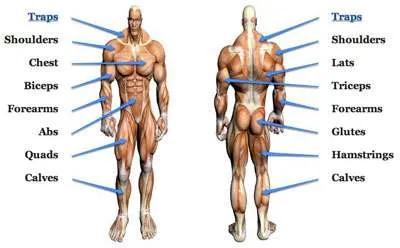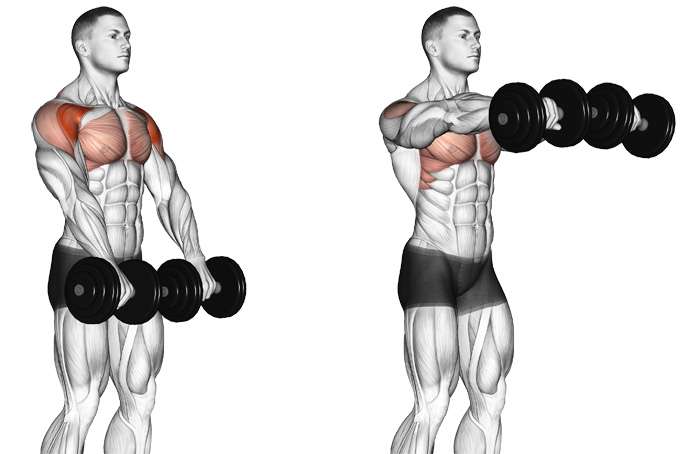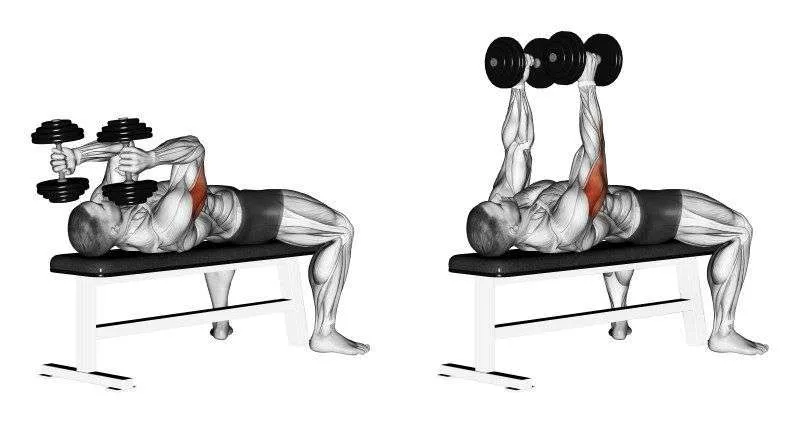Hi Friends of Oompf, it’s Alvan here.
Today I will be talking about our big and small muscle groups, its importance and how to strengthen each muscle group.

Big vs small muscle group
Fun fact: Do you know there are over 650 muscles in your body?
Knowing about all of the muscles in the body helps you to understand and know what to focus on in an exercise program during weight loss, healthy weight maintenance, or muscle building.
Each muscle group has a unique function within the body, and there are some muscles you might be surprised exist! These muscle groups are categorised into big and small muscle groups.
Examples of big muscle groups are:
- Hamstring
- Glutes
- Quadriceps
- Back
- Chest
Example of small muscle groups are:
- Shoulders
- Triceps
- Biceps
- Calves
Importance of training ALL muscle groups
(including the small muscles)
The main reason for training all muscle groups is simply balance. Like any other thing in the world or life, we always tend to have imbalances, so does your body.
Here are some of the reasons why you MUST focus on building a balanced body:
- Prevent injuries
- Symmetrical appearance that is more pleasing to the eyes
- Improved posture
- Prevention of aches and pains
- Get stronger faster because all muscles are strong and contribute to overall strength
- Build muscle faster due to greater strength
Balance is simply better when working all muscle groups. You may have seen people before with huge upper bodies and tiny lower bodies or vice versa. It doesn’t look good at all. Those men and women are risking injury and many health issues because they are only working some of their muscle groups. This will lead to many future problems.
Now, let’s review the best exercises for each muscle group, so that the next time you go to the gym, you’ll know what to do!
Best exercises for your small muscle groups
Shoulders

Shoulders Exercises
- Shoulder Press
- Lateral Raise with cable, elastic band or dumbbell
- Front Raise
- Reverse Fly
Triceps

Triceps
- Triceps Extensions (Skull Crushers)
- Cable Press Downs
- Bench Dips
Biceps

Biceps
- Hammer Curls
- Concentration Curls
- Incline Curls
Calves

Calves
- Leg Press Calf Raises
- Standing Calf Raises
- Seated Calf Raises
smaller muscles that deserve special attention
More importantly, there are even smaller supporting muscle groups that we often forget to challenge. And they’re just as important to the reasons mentioned above.
Here are some of the smaller muscle groups that deserve special attention:
Rotator Cuff
So named because they form a cuff around your shoulder blade, these four small muscles are essential in providing full range of motion for your arms and shoulders acting as stabilisers. Your shoulder is your most mobile joint and that is why you need strong stabilisers to move them without pain.
How to strengthen: Attach a light to medium resistance band to something secure like a door hinge, pillar, etc. Stand with your left side to it, grasping the handle of the band with your right hand. Bend right arm at a 45-degree angle to your side (your elbow is at your hip and your forearm is at a 90- degree angle), then rotate your arm at the elbow, pulling the band out towards the right side without pulling your upper arm away from your body. Next, stand with your right side towards the band. With your right arm bent at a 45-degree angle next to your side, grasp the handle of the band with your right hand and rotate your arm at the elbow, pulling the handle in towards the center of your body. Repeat 10 to 12 times on each side, alternating sides for each set. Start with a light resistance, then work your way up.
Obliques
All the crunches in the world won’t get you six-pack abs or a strong core without working your obliques. The obliques include the external and internal obliques, which cross diagonally from the bottom of your rib cage to your pubic area. They assist in keeping you in an upright position generally.
How to strengthen: Do side planks. Get into a side plank position – elbows or hand. Stack your right or left foot on top of the other. Lift your hips so your body forms a straight line. Rest the other hand on your thigh.
Gluteus medius and minimus
You work those other glutes religiously, but these supporting players play an important supporting role in stabilising your hips especially when standing on one leg.
How to strengthen: Using a medium to heavy resistance hip band, step inside the band with both feet wrapping both legs around the ankle or above/below the knee. Stand in a shoulder width stance, knees slightly bent, toes pointed straight ahead and hands on hips or out in front. Step out to the side and continue walking sideways for 10 -12 steps, then repeat in the opposite direction.
Forearms
Grip strength assists everything from opening jars to holding a racket. Since these muscles are also responsible for gripping heavy things, like dumbbells and barbells, weak grip strength will hamper your ability to train larger muscles and thus affecting your workout.
How to strengthen your forearms:
Easy: You can simply squeeze and release a tennis ball, doing 3 sets of 10-12 reps.
Moderate: Perform reverse grip curls, wrist curls and reverse grip wrist curls
Hard: Hang on a bar as if you were going to do a pull up, hold for 30-60s
Did you find this article useful? Email to us your feedback at [email protected]
#Weighttraining #LesMills #Dumbbell #Highintensityintervaltraining #stationarybicycle #Myfitnesspal #fitnessapp #pullup #personaltrainer

